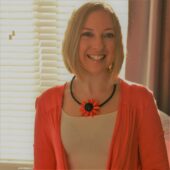Anxiety therapists in Stonehouse, Scotland Scotland, United Kingdom GB
We are proud to feature top rated Anxiety therapists in Stonehouse, Scotland, United Kingdom. We encourage you to review each profile to find your best match.
Heather Macfarlane
Registered Psychotherapist, Cognitive Behavioural Psychotherapist
Facing your fears and anxiety is a scary thing to do. That's why I will be alongside you each step of the way, showing you ways to understand and calm your anxiety and step out of your comfort zone at a pace that suits you. I work with general anxiety and lots of different phobias and I have a particular specialism in tokophobia, which is a fear of pregnancy and childbirth
15 Years Experience
Online in Stonehouse, Scotland (Online Only)
Jayne LESLEY Allen
Hypnotherapist, MIBWRT,MNCH,GQHP, Brainworking Recursive Therapist, NLP Practioner, Mindfulness Teacher, Coach
Are you avoiding situations due to anxiety? Is it stopping you from living a full life?
Anxiety attacks can produce an unpleasant cocktail of symptoms; sweating palms, nausea, palpatations, hyperventilation and feelings of paranoia. As anxiety is usually triggered by specific circumstances, many people find themselves avoiding those situations where they may experience anxiety, this in itself can exacerbate the problem, especially if those situations involve work, travel or socialising. With cutting edge psychological tools anxiety can be a thing of the past in between 1 and 4 sessions.
14 Years Experience
In-Person Near Stonehouse, Scotland
Online in Stonehouse, Scotland
Dr Anna Dako
Counsellor/Therapist, AHPP, RSME/T, UKSMDT
It's not always easy to recognise when anxiety is the reason you're feeling or acting differently. My ongoing support that builds on embodied awareness will help you be prepared to tackle early signs of when your bodymind needs some special attention or change. Breathing techniques will assist you here too. We can discuss your specific needs during a consultation session.
12 Years Experience
In-Person Near Stonehouse, Scotland
Online in Stonehouse, Scotland
Ulrike Nau-Debor
Psychologist, CPsychol, AFBPsS, HCPC registered
I work with many individuals who suffer from various anxiety disorders. I understand anxiety as a form of complex PTSD and, therefore, focus on addressing (childhood) trauma to help my clients feel safe within themselves and in the world again.
In my experience, my clients are often highly creative, introspective, sensitive, and possess quick, intelligent minds. Our challenge is to learn to experience anxiety and other underlying feelings in a safe and effective manner, allowing these emotions to pass without retreating into our minds and prolonging the distress. We also work on the beliefs and assumptions that contribute to anxiety, as well as any past trauma at its root.
Our work includes understanding our nervous system and learning how to feel safe in our bodies to create more ease and calm. Another aspect of anxiety can be an intense focus on others and their feelings. In such cases, our work involves releasing the beliefs and assumptions that drive this focus, addressing potential trauma, and learning to concentrate on our own experiences instead. This includes learning to trust oneself and one's inner guidance rather than striving to please external factors.
20 Years Experience
Online in Stonehouse, Scotland (Online Only)
Kyle Davies
Psychologist, BSc MPhil CPsychol AFBPsS
For people who have never suffered from anxiety it is almost impossible to describe how debilitating the symptoms can be. It can seem as if there is no escape from the pain and discomfort; it feels like life will be like this forever and that the symptoms can’t be helped.
Conventional approaches to anxiety seek to medicate. Many physicians may tell you that your anxiety is something you just have to live with. Counseling or mainstream psychological approaches may have you manipulate or change your thought patterns, while alternative practices may seek to have you relax or practice mindfulness. While there is value in some of these approaches, most fail to reach that deeper understanding of the underlying cause of anxiety and panic.
Symptoms of anxiety and panic are not the same as emotions of fear – these include worry, nervous, apprehension, concern, etc.
In everyday life we tend to talk about anxiety symptoms and conditions as being the same as emotions of fear, nervousness and worry. This is confusing for the simple reason that anxiety symptoms are not merely amplified fear, even though this can be what they feel like in many instances.
Anxiety is something of an umbrella term that covers quite a wide range of symptoms and experiences. In some instances this symptoms and conditions might relate to emotions of fear but in other instances they do not.
This is why it is entirely possible to rid ourselves of anxiety symptoms whereas we cannot, and should not try to rid ourselves of healthy emotions, because they play a vital feedback role in our day to day experience of life.
These are the anxiety conditions:
- anxious apprehension (worry, rumination)
- generalised anxiety disorder (free floating anxiety)
- Intense anxiety and panic attacks
- obsessive compulsive disorder (OCD)
- phobias of all kinds including agoraphobia and social phobia
- eating disorders
- derealisation
- depersonalisation
There is an enormous amount of scientific evidence to show that various regions of the brain are either over active or dysfunctional when anxiety symptoms are present. One of the most salient issues pertaining to this kind of scientific research is that different types of anxiety symptoms correspond with different areas of brain dysfunction.The forebrain appears to be the area most affected in most anxiety disorders. This is the largest portion of the brain and includes the cerebral hemispheres, the limbic system, the thalamus and hypothalamus, amygdala and the corpus callosum.
Each of the brain hemispheres is divided into four lobes: frontal, parietal, occipital and temporal. Collectively, the forebrain functions to control cognitive, sensory and motor function, regulate temperature, reproductive functions, eating, sleeping and the display of emotions. When it becomes dysfunctional it is evident that the range of symptoms can be enormous.Recent studies using electroencephalographic (EEG) methods have found that patients diagnosed with generalized anxiety disorder and obsessive-compulsive disorder had heightened activity in the left brain regions, whereas patients with panic disorder, panic symptoms or those subjected to high stress situations exhibited enhanced activity in the right hemisphere.
The important lesson from this type of research is that anxiety conditions are not all the same and therefore each case needs to be approached and treated depending on the needs of the individual and the types of symptoms present. However, we must also be mindful that over activity or dysfunction in brain regions is not the cause of anxiety – rather this activity is caused and supported by the 4 core element model outlined below. It is these 4 Anchors that trigger brain dysfunction, and it is only by fully addressing these that a complete cessation of symptoms is achieved.
The first step is to understand the nature, structure and cause of anxiety, and then we can begin to address the cause of the symptoms. Within our culture we use the words ‘anxious’ and ‘anxiety’ to mean both the emotion of fear and a varied and debilitating set of symptoms. This can be extremely confusing since fear, in the form of worry, nervous, scared, or dread, is often very different from the symptoms of anxiety or a panic disorder. I would argue that even though many anxiety symptoms can feel like fear, it’s also the case that many anxiety and panic symptoms do not feel like fear (see Anxiety Symptoms Checklist below). This means that is possible to experience anxiety symptoms without being afraid of anything.
Even though anxiety can be related to the emotion of fear at a deep unconscious level, there are many instances when symptoms of anxiety are present and there is no evidence of the emotion of fear. Most sufferers of anxiety will experience fear about the symptoms; though fear of symptoms is not the cause of symptoms. Fear can exacerbate symptoms and make sufferers of anxietyfeel significantly worse; however it is rarely, if ever, the underlying cause.
So what causes anxiety symptoms? The first step is to embrace the notion that symptoms are feedback from body and brain. Symptoms are not some nasty evil invader trying to make us suffer, they have reason for existing and that reason is to let us know that something is not right, something is blocked and out of balance.
There are Four Core Elements that lock anxiety symptoms in place. When we address these four core elements, we not only banish anxiety symptoms, we open up to the possibility of experiencing ourselves in a whole new way. The 4 core energy-flow model comprises:
- FEAR & AVOIDANCE OF SYMPTOMS. Anxiety is deeply uncomfortable so it can be a natural reaction to avoid situations and events that seem to cause anxiety. Avoidance can lead to more symptoms, so carefully navigating through this is the first step.
- REWIRING THE EMOTIONAL SYSTEM. Our emotion has a massive impact on body and brain. Blockages and imbalances within the emotional system are significant causes and contributors to anxiety conditions as well as a huge range of other chronic health challenges. Yet, our understanding of the nature of emotion and how to effectively process and regulate it remain poor. This element focuses in revealing the true nature of emotion and critically how to connect with it and facilitate a flow.
- WEARING A MASK: As we move through life and seek to get along, fit in, be accepted and do well, we unconsciously block our true nature and end up being more of who we are not than who we are. Anxiety symptoms often tell us when we are covering up who we are, or are disconnected from our authentic core. Reconnecting with our core and removing the shackles of who we used to be takes us a step closer to being anxiety free.
- CONTROL & CREATION: Whether we like it or not, we play a significant role in the creation of our experience of life and reality. However, when shackled with anxiety we feel out of control, restricted as if we have lost our freedom. Learning how to create inner freedom and design our lives is the final piece of the puzzle.
The four core element model uncovers a different perspective on the cause of anxiety conditions and embraces a full understanding of the nature of the human condition. It puts you back in the driver’s seat to return to your natural healthy self. Your natural state is to be connected and happy; all that’s needed is a little guidance to help you find the way back to your default setting.
25 Years Experience
Online in Stonehouse, Scotland




